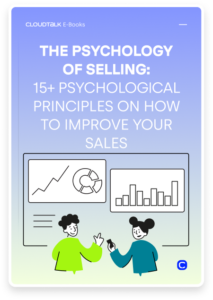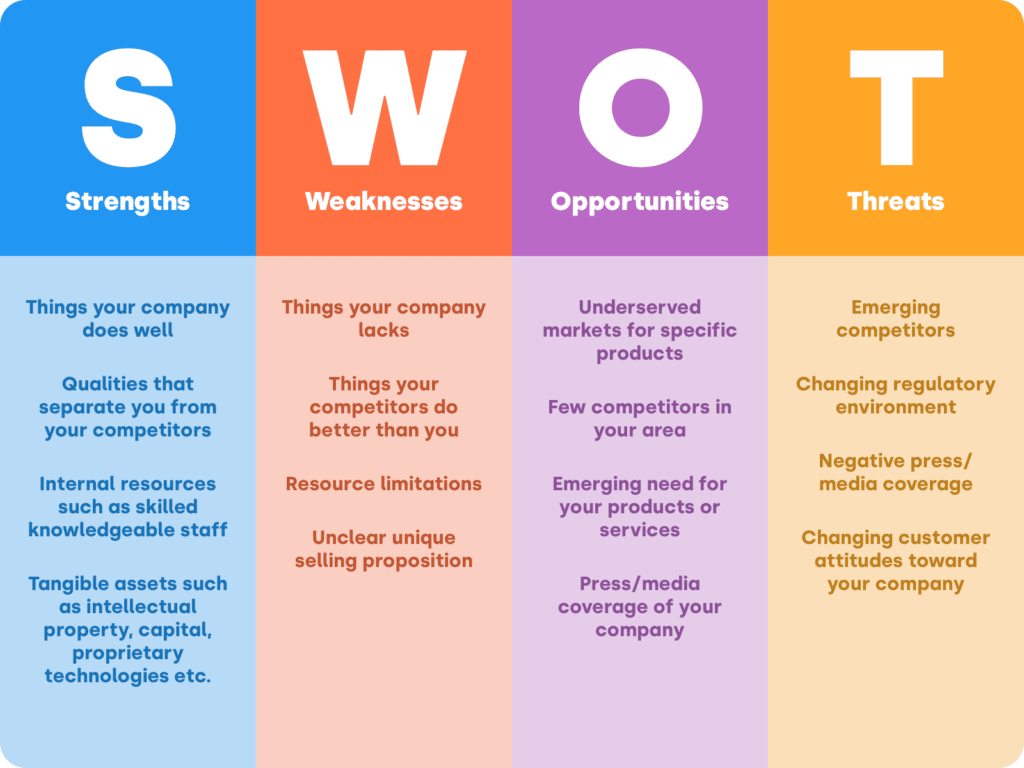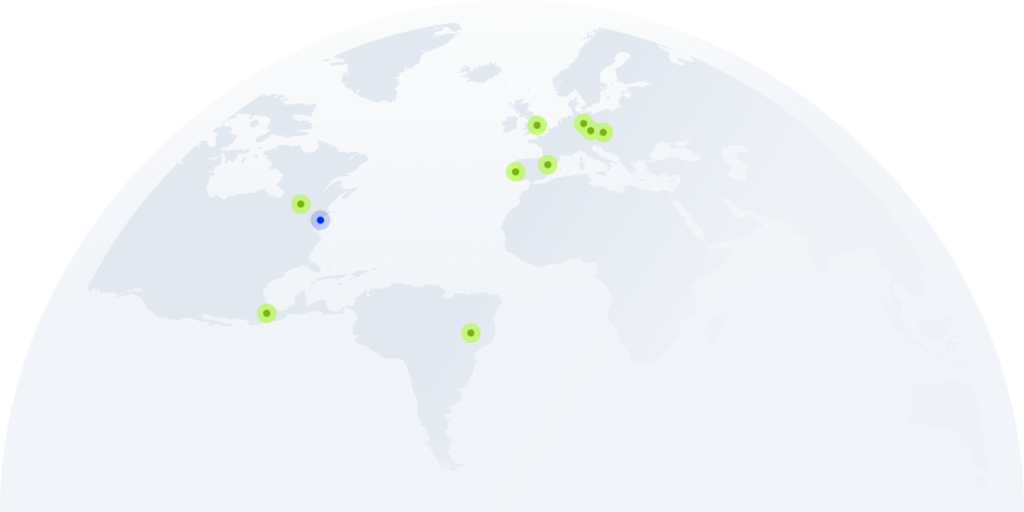A Step-By-Step Guide to an Efficient Sales Territory Plan

According to Harvard Business Review, quality territory design can increase your revenue by 2 to 7 %. That’s why the territory plan is an important strategic groundwork for sales.
It helps you understand where your opportunities are. How to reach the right potential clients and achieve your goals. If it lacks balance, you invest too much time into non-potential leads and too little energy into profitable ones.
This guide will guide you through the steps necessary for crafting a successful sales territory plan.
What is the Sales Territory Plan?
It is a strategy for effectively targeting and approaching prospects, leads, and existing customers. The main objective is to close more deals. Traditionally, sales territories were created solely by geographical locations. That is where the word “territory” originates. Salespeople focused on prospects within a specific geographic area.
Nowadays, the digital era changed this. Reps contact leads and customers through phone, email, or other virtual channels. Personal sales meetings are almost completely eliminated.
Therefore, an approach to work mainly geographically lost its purpose.
The territory mapping template now covers many factors:
- Types of industries
- Business site
- Deal potential
- Customer types
- Account types
- Referral source
- Degree of purchasing a product
- Etc.
Scale your business with the Psychology of Selling!

The current role of territory mapping is to set proper sales quotas, define various strategic fields, and lower costs. Based on these, managers should provide the team with an efficient plan to improve productivity. Sales reps can therefore work strategically to address the right needs of the right customers.
A quality territory plan should have several main objectives:
- Assign the right segments to the right reps based on their expertise
- Optimize customer experience by equipping the team with unique challenges
- Build a base for strong, lasting customer relationships
- Ensure that sales teams’ work ensures the strongest ROI possible
Why is Sales Territory Planning Important?
The Sales Management Association conducted a survey with around 100 organizations. Those with an effective territory design had a 14 % higher sales objective achievement than the average. On the contrary, the same study claims that the institutions with ineffective plans had 15 % lower success rate than the average.
Therefore, creating a sales territory plan template truly encourages efficiency and boosts profits. Let’s look at some most important advantages.
Higher progress and optimized strategies: Segmenting your opportunities by detailed criteria helps you to build a tactical approach towards sales. With data-driven insights into territories, you improve performance and see strengths as well as weaknesses. Therefore, you make more strategic decisions.
More time for selling: Industry analysts’ studies repeatedly show a decline in productivity due to unproductive approaches to sales. Such as educating agents about segments that other reps may already know.
In contrast, Harvard Business Review claims that businesses show a sales increase of up to 7 % by simply redesigning their focus. Having a great territory mapping strategy, therefore, leads to less time for unnecessary training and more space for selling.
Balanced workload: Territory mapping template helps avoid people being counterproductive by working on the same task. It ensures each sales rep is at full capacity in their own assigned field. This way, you also lower agents’ frustration and reduce turnover.
5 Steps to Create a Sales Territory Plan
A balanced sales territory plan makes wonders for your business. Yet, you need a unique approach. One that fits your business specifically. What works for one company doesn’t necessarily have to work for another.
Here are 5 steps you should follow to create a well-suited territory plan.
#1 Define Your Business Goals and Objectives
- Financial Goals
Before you can start planning, you need to know what you want to achieve. There are many different approaches to setting sales goals.
First, let’s discuss financial goals. Start on the top – from big sales numbers – and work your way down. Set your annual financial goal. Then break it down into quarters, months, and even weeks.
Example: Let’s say that your annual goal is 500 thousand USD. That makes your quarterly goal 125 thousand USD and monthly goal 41,7 thousand USD.
Unsure what your annual goal should be? For starters, it’s good to take last year’s sales numbers and add ten percent to them. Of course, this depends on your financial situation. It can be more, and it can be less.
- Strategic Goals and Objectives
Now, let’s continue with a plan on what objectives you’re trying to accomplish. This will bring more clarity to your company’s goals and industry trends.
To put together what you are trying to achieve, answer the following questions:
- What is the mission you are heading towards?
- What do you want to offer your customers?
- What are key trends in your industry?
- Do you comply with these trends?
- What is your average conversion rate?
- How many prospects do you need to meet your goals?
- Which of your services is selling the best?
- Why can that be?
This is the first step towards creating a productive territory mapping system.
#2 Analyze Your Market and Segment your Customers
After clarifying your goals, you should dig deeper into your market field and split your customers into segments. This can be done based on different characteristics. Industry, purchase history, location or any other relevant data.
Define your customers:
Exploring your market clearly showcases who your customers are.
Use these questions to look closer at them:
- What is your target group’s common pain point?
- What do they often purchase?
- How does it lead to deals you have won?
- What caused a loss of deals you didn’t win?
Segment your customers:
Determine how to segment based on what is relevant for your business. You can divide the criteria by B2B and B2C sectors.
- For B2B (business-to-business) sales: department function, organizational roles or business type and size, etc.
- For B2C (business-to-consumer) sales: behavioral patterns, location, demography, psychography, etc.
Define key market trends:
It may be based on your market or on geographical location. Simply, on anything relevant to your business focus. The main point is to identify your business environment.
What to look for:
- What are the key trends in your industry based on diverse criteria?
- What makes your business unique?
- How can you use your findings to drive more sales?
Besides searching for new findings, look at relevant statistics you have already collected. An intelligent revenue platform Xactly claims that with the right data insights, companies can reduce territory planning time by up to 75 %.
Based on your current findings, select those territories that show signs of growth in comparison to the past results. Then assign these to your best-fitting sales reps. This way, they will know how to drive sales based on trend-evolving tendencies.
Evaluate competition
Your own business data is not the only way to analyze and segment a market base for territory planning. You can, and you should learn a lot from your competition.
First, put together who they are. Then, think of what they offer and why customers choose their products. How can you use it, so they rather choose you next time?
Observe a competitor’s product features and compare them to yours.
Follow mainly these criteria:
- Pricing
- Reviews
- Positioning
- Use-cases
#3 Set Goals and Create Targets
Until now, you had defined your goals, analyzed your market environment, and segmented your customers. Now it’s time to create targets. Well-tailored targets let you achieve bigger things.
Our advice – do it S.M.A.R.T. This abbreviation represents how your targeting strategy should look: Specific, Measurable, Achievable, Relevant, and Time-based.
Create targets for both your teams but also for individual reps. These will put your business into order, as well as uncover what works and what needs to be modified. It will also motivate your sales agents to be more productive and motivated.
So, how do you create Specific, Achievable, yet Time-based and Measurable goals? The target should be as tangible and well-organized as possible. You need to have a precise target number in mind, but don’t create too much pressure on your sales agents. Otherwise, they will end up confused and frustrated.
Here is a practical example:
Rather than setting a target of closing 60 deals a year to meet quotas, set a target of making 15 calls each week. A smaller number in a relatively short time feels much more tangible. This way, you are giving your agents a task but empowering them to take a charge of how they handle it. The above-mentioned approach is also easier for you to monitor.
#4 Perform a SWOT analysis
The SWOT analysis is a no-brainer. Yet, it’s an incredibly powerful tool to boost your business strategy.
It uncovers base factors that influence your business, so you can develop a strong territory plan. This way, you will have a clear understanding of what work needs to be prioritized in order for the company to grow.
SWOT consists of 4 words: Strengths, Weaknesses, Opportunities, and Threats.
Strengths
Strengths analysis tells you which of your advantages you can utilize to make your business grow.
The first step is to define the objectives of your strengths:
- Where do they excel?
- What strengths do you want to build on?
- How can you use your team to execute the strategy?
Focus mainly on the last question. Sales reps are your strongest attribute. Each person has their own background and unique experiences to offer. We will look deeper into this a bit later.
Weaknesses
Here, think of your soft spots. What are the vulnerabilities of your business? Look into your sales processes, but identify weak points in your team, too.
Examples of what can be your possible weaknesses:
- An overly large geographical area you cover
- Insufficient understanding of your product – from both your and customers’ side
- Lack of understanding to your customer’s real needs
- Chaotic or missing sales tactics
Opportunities
Most businesses have opportunities they either don’t realize or don’t utilize. What are yours? Look for a gap in the market that you can fill.
Examples of possible opportunities to keep an eye on:
- Lack of competition in your field
- Under-served territories
- Growing demand for your products or services
- Sales representatives with connections to the right customers
Threats
As there are opportunities, there are also threads you need to be aware of. In each territory of your plan, consider what can harm your business. This way, you can easily avoid it.
Examples of possible threats:
- Unexpected changes in your market
- New industry and regulation standards
- Strong competitors fighting over the same market
Keep in mind that these factors are not standing alone. They work together. What is your strength that may also be a big opportunity? You just need to find the right territory and sales professionals to make use of it.
But don’t only focus on where you can benefit. In contrast, an area that hides a severe competitive threat requires special attention to protect your business from any negative surprises.
Another important insight – SWOT analysis doesn’t only point out big things, such as revenue, market needs, or geography. It can reveal small issues you shouldn’t overlook. Such as gaps in the systems you otherwise wouldn’t see. Or a need for better training. There may even be a hidden challenge within the product or service you offer.
Therefore, the SWOT analysis is not only here to show precise results. It makes you think complexly about how your business and territory plan works and how it should work.

#5 Assign Leads
Now that you analyzed where your agents’ best knowledge lies, start assigning the most suitable reps to each territory.
First, we recommend categorizing your leads by value. Some of them are not very likely to bring a lot of profit. Others are promising, with a high chance of becoming customers. And some are almost in your pocket.
- First group: It should contain your most valuable leads. Those who require little effort in order to purchase your product.
- Second group: Here are leads who need a bit more work but still present a pretty high chance of generating revenue. Therefore, they are worth investing more time into.
- Third group: Leads in this category require a lot of effort in order to turn them into paying customers.
After you form the groups, decide how to use your resources to best reflect them. Assign leads from each of the three categories to fitting sales reps. The first group will probably require your most experienced agent. The second and third groups can be handled by others.
Also, as we mentioned earlier, use reps’ specific experiences. If you communicate with a lead from the pharmaceutical industry, assign an agent who already has established relationships in this field. She or he, therefore, knows how to talk the leads’ language. Another person can have deep knowledge in closing deals within the financial sector. Use it to your advantage.
You can also use the same system with experiences based on other attributes, such as company or deal size, location, etc.
Tools You Need to Build Your Sales Territory Plan
After completing all steps according to our guide, you will need a few tools to put things into action. Here, we will explain what systems are essential to seamlessly execute your quality sales territory plan.
#1 Office Software
Whatever visual approach you take towards crafting your territory map, you need reliable office software. That helps you turn your plan into tangible documentation, no matter if you seek an image, graph, or table.
Office software usually includes applications for word processing, email, spreadsheets, and presentation decks. The two most popular tools are Microsoft 365 and Google Workspace.
Google Workspace is generally a better choice for small to medium-sized businesses. Those that are good to go with a simple solution. In contrast, Microsoft 365 has enterprise-grade features for big, more complex companies.
Here, you can find an overview of the best office software for 2024.
#2 Territory Mapping
Sales territory mapping software is key for each successful plan, taking all important data from the CRM (customer relationship management) system. It assists with organizing information for various territories and visualizing them on a map. This gives you a detailed insight into prospects within a specific area.
The sales territory mapping software easily filters important data. It offers deep insights into customer or leads behavior. Such as previous interactions or their last visits. Therefore, it helps figure out what are the next possible steps you need to implement for better targeting. This information may then be easily distributed amongst all agents.
Managers can also make use of the sales territory mapping software to measure performance and see which process resulted in a sale. It saves time and may result in better collaboration. Between sales reps and leads, as well as between your team members internally.
Simply, it lets you squeeze the most out of each territory field.
#3 Customer Relationship Management Platform
A CRM system makes data processing much easier. It allows you to track all the important details about prospects and interactions with them. CRM contains a whole communication history and keeps track of all necessary information.
This way, your reps always have access to each detail, which supports them in closing more deals. Data analysis in CRM also helps companies with customer retention and account growth.
Especially when you integrate it with your calling software. This way, you automate the process of merging data from both systems into one. You can keep them in a single, well-organized place.
#4 Sales Team Communication Software
Almost everything we do today, we do remotely. If you are selling, you need several online communication platforms. Such as email, social media accounts, SMS or a quality calling system.
Yet, for current needs, an old analog call center phone setup just doesn’t do the work anymore. Your reps are probably traveling a lot or working from home. A cloud-based calling solution – an online phone – allows them to contact leads and customers from anywhere. They can also receive inbound calls on their own laptops or phones without using a personal number.
No need for additional hardware. The software does all the work.
What’s more, traditional phone lines miss countless features. These can rapidly boost your sales. For example, having statistics that evaluate data directly from your software is a huge plus for crafting an effective sales territory plan.
Then, there is a call recording feature. This cuts the time for personally observing new sales reps’ performance. You may listen to their phone calls. Anytime, from anywhere. It further helps agents with closing deals faster and collects valuable insights for your territory planning. Since you can come back to each conversation, call recording lets you explore customers’ pain points, needs, likes, and dislikes.
Through the call monitoring feature, you can listen to phone calls in real-time. It allows you to enter the call when agents need help. It also lets you talk with your reps without the caller hearing you or even joining the conversation. Call monitoring often discovers a space for additional mentoring.
With skill-based routing, you can put your territory mapping findings into action. The tool allows you to assign the best-fitting agents to the best-fitting clients. Or utilize VIP queuing to make your most precious customers feel important.
In CloudTalk, we have all these features and 70 + more. Build your sales territory plan with an industry-leading cloud-based calling solution.
















